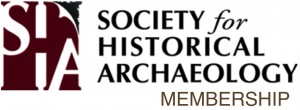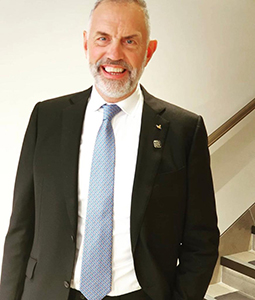 Here’s the latest in our series of entertaining interviews with a diverse array of your fellow SHA members. Meet a member for the first time or learn something about a colleague that you never knew before. This blog series also offers current members an opportunity to share their thoughts on why SHA membership is important (Camaraderie? Professional service? Exchange of ideas in conference rooms and beyond? You tell us!). If you would like to be an interviewee, please email the Membership Committee Social Media Liaisons Eleanor Breen (elbreen@mountvernon.org) or Kim Pyszka (kipyszka@aum.edu).
Here’s the latest in our series of entertaining interviews with a diverse array of your fellow SHA members. Meet a member for the first time or learn something about a colleague that you never knew before. This blog series also offers current members an opportunity to share their thoughts on why SHA membership is important (Camaraderie? Professional service? Exchange of ideas in conference rooms and beyond? You tell us!). If you would like to be an interviewee, please email the Membership Committee Social Media Liaisons Eleanor Breen (elbreen@mountvernon.org) or Kim Pyszka (kipyszka@aum.edu).
An interview with Sam Tony Bowman (tonybowman@archaeologist.com), a field archaeologist from the University of Tulsa, a past committee member, and a current member of the Society for Historical Archaeology.
Fieldwork or labwork?
I’m not an either/or person when it comes to lab and fieldwork. I think they are both important and I enjoy doing both. When I was looking for a topic for my dissertation, my advisor, Wilburn Hughes, encouraged me to do a project that built upon previously excavated collections. I was afraid that I might not be as marketable if my dissertation didn’t include fieldwork, so I opted to do fieldwork. But the importance of working on collections that have not been written up has stayed with me and I am currently trying to develop public programs that emphasize both the lab and the field.
Who influenced your decision to become an archaeologist?
My dad had been my greatest inspiration. His enthusiasm when it came to topics related to history and archaeology baffled me for most of the years of my life. That made me quite curious as to the possibilities present in the world of archaeology. Now, I can say I've sort of inherited and copied that same enthusiasm. Anytime I get to work on a new project, I see it as an opening to, at least, provide some answers to some persistent questions, as well as asking new thoughtful ones.
What is the first site you worked on? What is the last one (or current one)?
The first site that I worked on was Flowerdew Hundred alongside Florie Bugariun under Jim Deetz. I was an undergraduate student, and this was my first field school. I am currently working on collections from Nicodemus, Kansas and James Island, The Gambia, but the last site that I dug was the Best Farm Slave Village on the Monocacy National Battlefield in Maryland. I was working with Joy Beasley of the National Park Service and my colleague at Howard, Eleanor King.
What did you want to be when you grew up?
I really wanted to be a marine biologist, but along the way, I developed an interest in historical literature. I then altered my path and started pursuing archaeology.
Why are you a member of SHA?
I identify myself as a historical archaeologist. Also, when I first started, it seemed like an extended family. Many people knew each other, and I wanted to be a part of that. Now, it has grown so much. Although I see many new faces, I still think of the SHA as it was back then…like a family.
At what point in your career did you first join SHA?
My first year in graduate school.
How many years have you been a member (approximately)?
Since 1992 so it should be around 20 years. There were a few years off and on when I wasn’t able to attend the meetings.
Which article from Historical Archaeology has been the most influential to you?
The proceedings of the 1987 plenary session published in 1988 were extremely interesting for me (Nicholas Honerkamp, “Questions that Count in Archaeology; Plenary Session, 1987 Meeting of the Society for Historical Archaeology Conference on Historical and Underwater Savannah, Georgia” 22(1)). I particularly appreciated Mark Leone’s “The Relationship Between Archaeological Data and the Documentary Record: 18th Century Gardens in Annapolis, Maryland” (22(1):29-35)). It closely tied in to a site I was analyzing, the Dufferin Terrace. It allowed me to understand minute phenomena observed in Québec City that, when compared to sites in Maryland, presented a coherent picture of élite behavior in the British colonial world. It also highlighted shifts of behavior as Québec moved from the French to the English Régime. It thus helped me to seat my understanding of the city in a wider international and cultural context. The collection of articles on the questions that count in historical archaeology: Historical Archaeology, vol. 22, no. 1 (1988)(Read this for free on the SHA Publications Explorer)
Which benefit of belonging to SHA do you find the most beneficial?
Reconnecting each year with people in my field of interest. It is also a quick way to keep up with the latest developments in historical archaeology, and a good way to generate new ideas.

